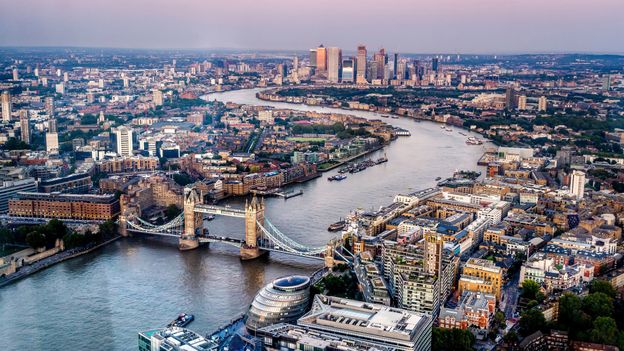...
Monday, 31 August 2020
What’s behind the Pie & Mash revival?
... Although some shops serve a range of pies (including fruit pies – particularly cherry pies – with custard) the quintessential pie is minced beef, with a suet base and a flakey pastry crust. There’s nothing unusual about the mash, but the liquor (parsley and potato water) and eels (stewed or jellied) are unique. Why eels? Because until recently they were one of the few species that could survive in the filthy, polluted River Thames. Ironically, now the Thames is a lot cleaner, fish are thriving and the eel population has plummeted, so the eels in London’s Pie & Mash shops mainly come from abroad. ...
The lost island on the River Thames that is shrouded in legends, myths and hidden secrets
... The River Thames is full of little islands that most Londoners don't even notice day-to-day, and while some of them are little more than a place for herons to rest, others have a bit more going for them. ...
Saturday, 8 August 2020
The remarkable story of London's lost beach that everyone's forgotten about MyLondon
... Could you imagine ever heading to the bank of the River Thames for a day out at the beach? ...
... Many decades ago Tower Beach sat on the shore on the River Thames next to Tower Bridge. ...

The lost treasures of London's River Thames BBC News
... “Mudlarks” play a vital role in preserving London’s history by picking up objects washed out of the River Thames’ mud, from woolly mammoth teeth to Roman lamps to Tudor rings. ...
The River Thames is one of the greatest and largest archaeological sites in the world (Credit: Circle Creative Studio/Getty Images)
... One of the surprise best-selling books of 2019 was Mudlarking: Lost and Found on the River Thames by Lara Maiklem, who stumbled into mudlarking almost by accident. “One day I found myself at the top of one of the river stairs looking down onto the foreshore and I decided to go down,” she wrote. “For some reason, until then, I'd thought of the foreshore as a forbidden space, sometimes revealed, other times covered over with water. I found my first object that day, a short piece of clay pipe stem, and I was hooked.” ...
Sheppey author Lisa Woollett turns beach rubbish into treasure
... For her latest, she travels along the River Thames from central London to Sheppey and then ends in the sea off Cornwall. ...
Two Port Rivals Join Up to Announce Major New Freeport Boost for the River Thames
... UK – Whilst the major port operators are seen by outsiders as rivals, those involved in ocean freight know that behind the scenes there are always a number of high level contacts between them. Now it seems government's avowed intent to promote a series of freeports around Britain has spawned a collaboration on the River Thames. ...
Daniel Wallace Explores the Art of Mudlarking
... Mudlark. The magic of the word doesn’t wane from repetition, but the beauty of it is deepened by its regrettable history. It’s defined by the New Shorter Oxford English Dictionary on Historical Principles as “a person who scavenges for usable debris in the mud of a river or harbour.” It’s a term that was coined in the latter part of the eighteenth century, in London, describing those who scratched around on the shores of the River Thames. The Thames is a tidal river. It rises and falls by up to twenty-four feet a day. And every day on its shore—the foreshore, it’s called, the part of the shore between the high and low water marks—something is seen that wasn’t seen before. Two hundred years ago in London, the children (most mudlarks were children, or robust older women) took to the water’s edge at low tide hoping to find something, anything, they could sell. By the late nineteenth century, there were almost three hundred of them, scrounging for a living in the river’s muck. Lumps of coal, rope, bones, iron, copper. The children hauled their catch up to the street and sold it for whatever they could get. But there were also incredible treasures to be found: Bronze Age swords, shields, rapiers, Roman coins. ...
